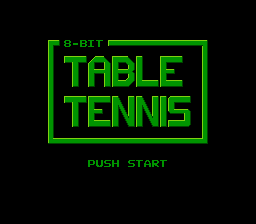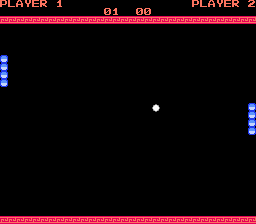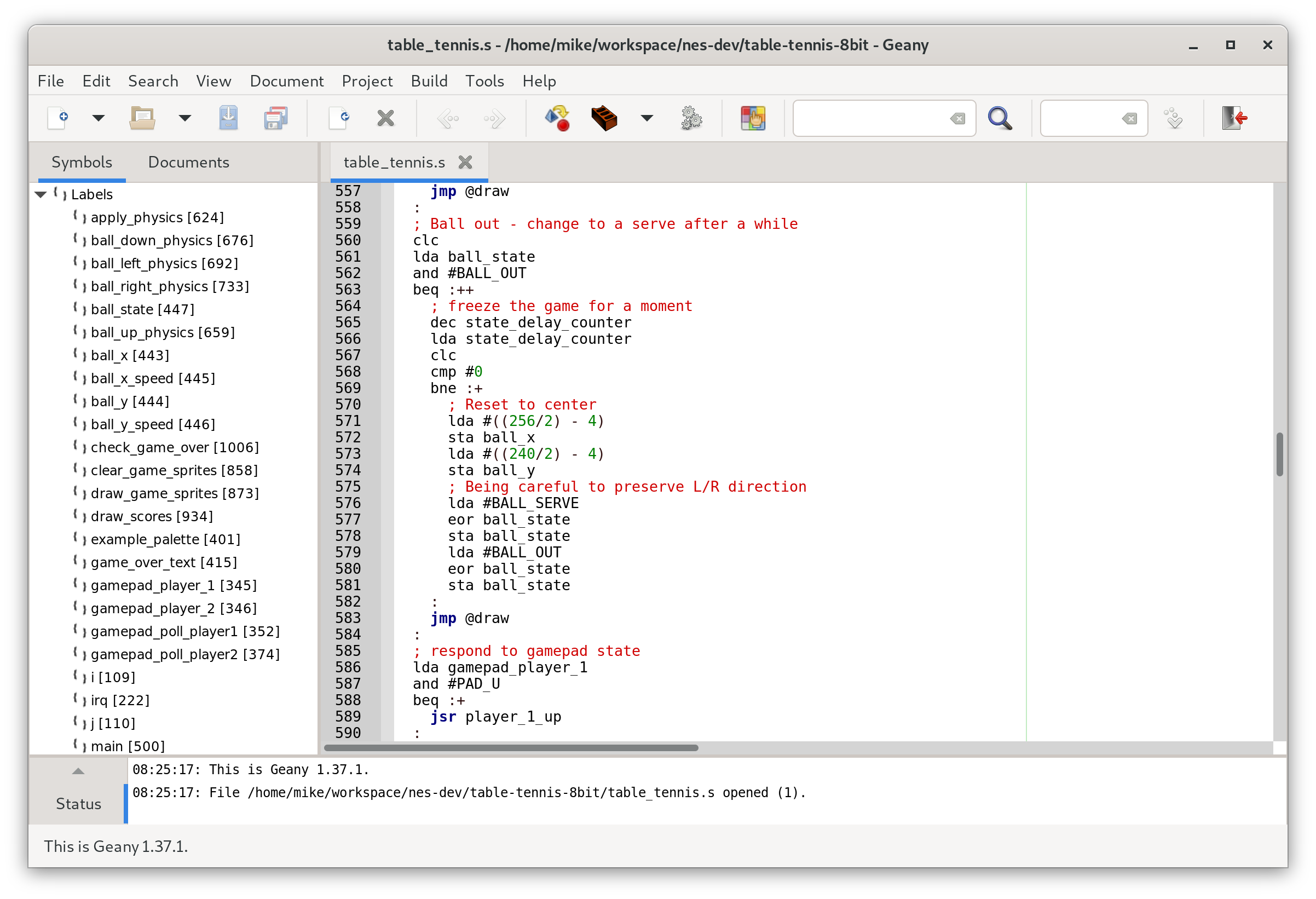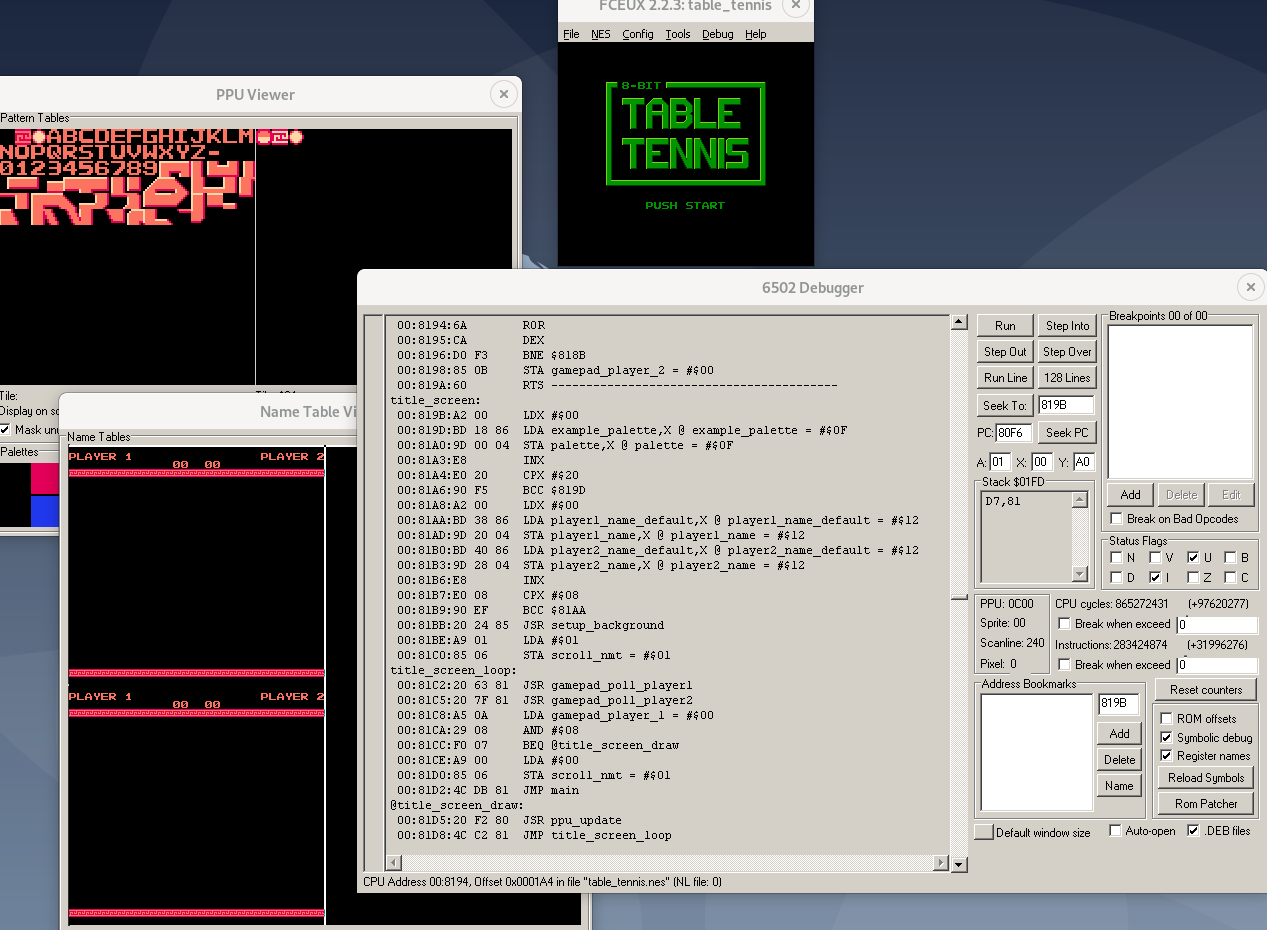Last year, I spent a fair amount of time learning how to make games for the Nintendo Entertainment System. The homebrew scene for this system is very much alive, and I was quite proud that I was able to make a simple, working video game which runs on a NES emulator.
So, I present to you: 8-bit Table Tennis.


This blog post just a few notes about the tools and resources that I used for NES development on Linux, plus a few things that I learned along the way.
Development tools
The CPU in the NES is a derivative of the once-ubiquitous MOS 6502, and games for it are mostly written in 6502 assembly. I already do a fair amount of programming, but quickly found that my usual editors, compilers and debuggers were useless for this platform.
The main resources I used were:
- The Nesdev Wiki for information about the platform.
- The 6502.org tutorials list.
- This example project by Brad Smith, which I used as a base.
- This instruction set reference - many similar references are available online.
To build my code, I used the cc65 toolchain, which includes a cross-assembler. I did most of my testing in the Nestopia emulator, and most of my programming in Gedit. All three of these are available in the official Debian repositories.
Gedit setup
Out of the box, Gedit can’t syntax highlight 6502 assembly. I found a language spec file for it on the 6502.org forums, and edited it slightly before using it.
At the time of writing, new language specs can be installed on Debian like this:
sudo cp asm6502.lang /usr/share/gtksourceview-4/language-specs/asm6502.lang && sudo chmod 0644 /usr/share/gtksourceview-4/language-specs/asm6502.lang

It is possible to use plugins to add a console and git support to gedit, but this is still a long way from a full IDE.
Geany
Geany is a programming text editor, and is also available in the official Debian repositories.
I wasn’t able to get it to recognise 6502 assembly, but it does have good x86 assembly (NASM) support, which is similar enough for it to allow navigation through the source code using labels.

Geany can also set up projects with build scripts (such as a Makefile), which could allow for faster testing.
FCEUX
FCEUX is a NES emulator which has an in-built debugger, and it runs well under WINE. I was also able to build and run it natively on Linux, but the debugger is only present in the Windows build.

I also briefly experimented with using the FCEUX Lua interface to pause/resume the emulator over a TCP socket for debugging, since that interface is available in the Linux build. I could only pause the emulator between frames, so I decided to abandon this.
Graphics
I created the graphics in the GNU Image Manipulation Program, and manually broke the title page down into tiles.

I also wrote a custom program to convert a 4-colour PNG file into the native NES CHR graphics format. I run this conversion as part of the build process, so that the graphics files can be stored in a modern format.
Things I learned
Programming for the NES is quite simple once the project is up and running, but even simple tasks can be a real hassle. I spent more time than I expected on mundane tasks such as collision detection, and certainly did a poor job of implementing game physics. The 6502 CPU has no built-in way to multiply, divide, or perform floating point operations. The version used for the NES additionally lacks any way to perform a binary-to-decimal conversion, which would have been very useful for displaying the player scores! In hindsight, I would have been able to improve the physics by pre-computing some lookup tables.
On the other hand, I expected it to be difficult to work within 2KiB of RAM, but due to the simplicity of the game, I only used around 25% of it, and had plenty of CHR ROM space leftover as well.
It took me three weekends to make this project, without having ever written a line of 6502 assembly before. I think that development would be a lot faster if I were able to set breakpoints from my code editor, so I will definitely be looking at other debugging emulators before attempting my next 6502 assembly project.
Conclusion
8-bit Table Tennis is available as an iNES ROM on GitHub.
I have only been running it with an emulator, so if any readers of this blog own a flash cartridge for the NES (such as an Everdrive), then please let me know if it works on the real hardware!